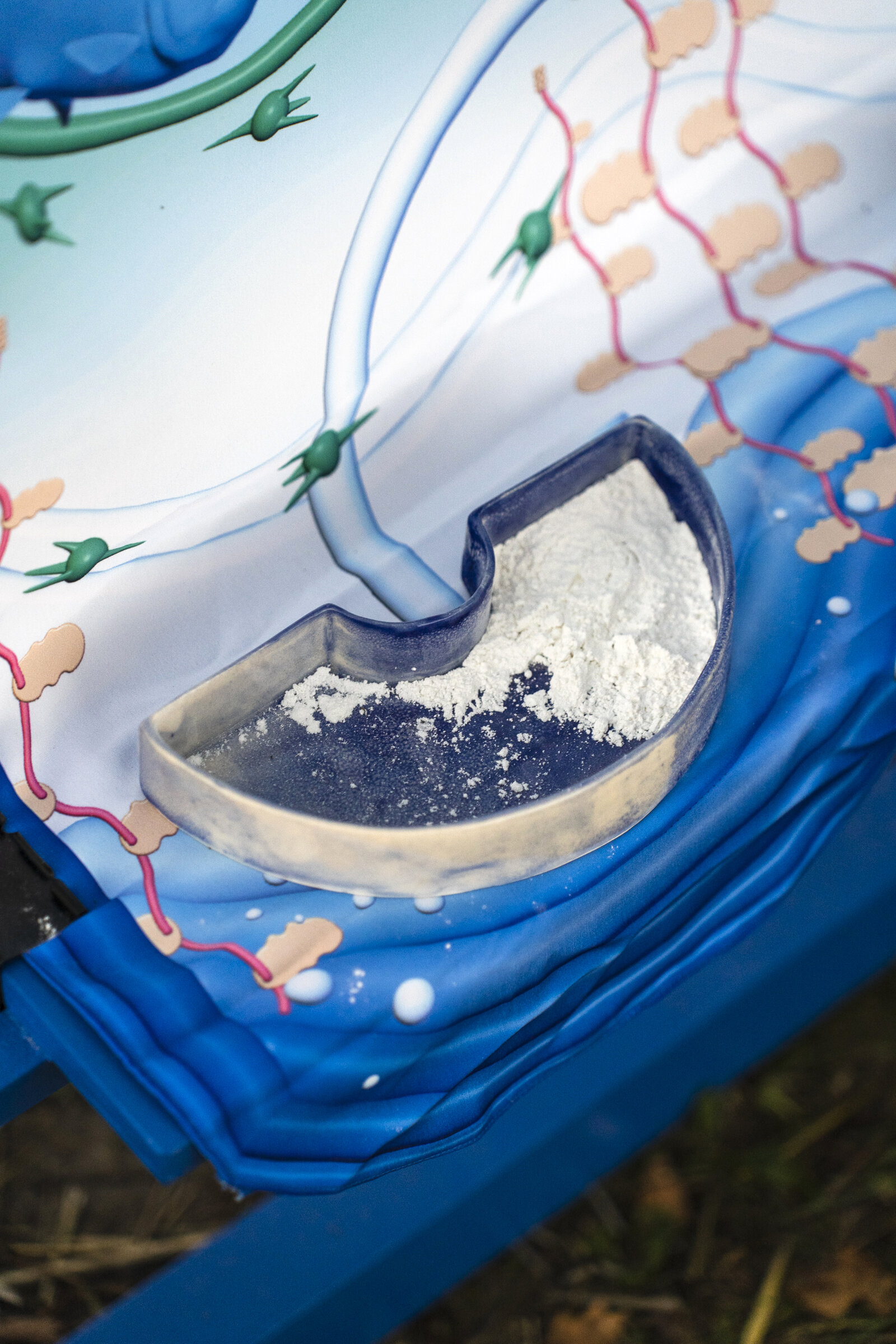Sivatagi kőzet szivárgott a Balaton vizébe.
Ez a sivatagi kőzet egy látszólag élettelen tengerentúli tájból származik, amely valójában a növényi termékenység lényegi eleme és világszerte használják trágyaként kertekben és farmokon. Monumentális bányagépek és a világ leghosszabb futószalagja szállítják ezt a kimerülőfélben lévő, fehér, meszes kőzetet a dűnékről egyenesen a több száz méter hosszú uszály gyomrába. Ahogy a kőzet a futószalagon halad, a szél felkapja a port és kiteríti a Szaharában, világos nyomot hagyva a tájban, amely a műholdfelvételeken is kimutatható. A kőzet szállítása monoton és automatizált, a futószalagot katonaság és egy 2700 km hosszú homokfal védi. A szállítást és bányászatot végtelenségig folytathatnánk, de a foszfát, “a világot tápláló sivatagi kőzet” [1] előbb-utóbb kimerül. A gazdák körében a végtelen erőforrás hamis képzete okoz földalatti harcot. Azáltal, hogy termékenységet növelő trágyát szórnak a talajba, nagy mennyiségű foszfor kerül a földbe, sokkal több, mint amennyit a növények képesek felhasználni. A foszfor a patakokba és tavakba is beszivárog, és vetélkedésre kényszeríti a férgeket, baktériumokat, halakat és algákat a tápanyagokért és az oxigénért.
A Fertile Land egy multimédiás installáció, ami a Balaton Felvidék túltrágyázását és annak kövezezményeit vizsgálja és a foszfor jelenlétét vizualizálja.
[1]Kasprak, A. (2016, November 30). Phosphate in Western Sahara: The Desert Rock That Feeds the World. The Atlantic. https://www.theatlantic.com/science/archive/2016/11/the-desert-rock-that-feeds-the-world/508853/
Fuzzy Earth (Gedeon Tekla & Basti Gschanes): Fertile Land
installation (wood stand, digitally printed textile, ceramic vessels)
A desert rock infiltrated Balaton waters.
A desert rock that one can find a tiresome cargo journey away in a seemingly lifeless landscape overseas is actually the essence of plant fertility and is used as fertilizer in gardens and farms worldwide. Monsterous mining machines and the planet’s longest conveyer belt carries this finite chalky white rock from the dunes directly into the belly of hundreds of meter-long steel container ships. As it travels with the conveyor belt the wind blows the powder across the Sahara leaving behind a bright mark wide enough to be visible from satellite images. The process is monotonous, automated, and heavily guarded with a 2700 km long sand wall and military presence. We could keep the belt running forever but phosphate, ‘the desert rock that feeds the world’[1] will come to an end eventually. There is a false feeling of an infinite resource among farmers causing a subterranean battle. By sprinkling dressing to the soil to aid the production of crops, a high dose of phosphorus is released into the land, far more than plants can access. It enters creeks, and lakes and triggers entangled biological warfare between worms, bacteria, fish, and algae for nutrients and oxygen.
Fertile Land is a multimedia installation that explores the consequences of overfertilization in the landscape of Balaton Uplands and visualizes the presence of phosphorus.
[1]Kasprak, A. (2016, November 30). Phosphate in Western Sahara: The Desert Rock That Feeds the World. The Atlantic. https://www.theatlantic.com/science/archive/2016/11/the-desert-rock-that-feeds-the-world/508853/




